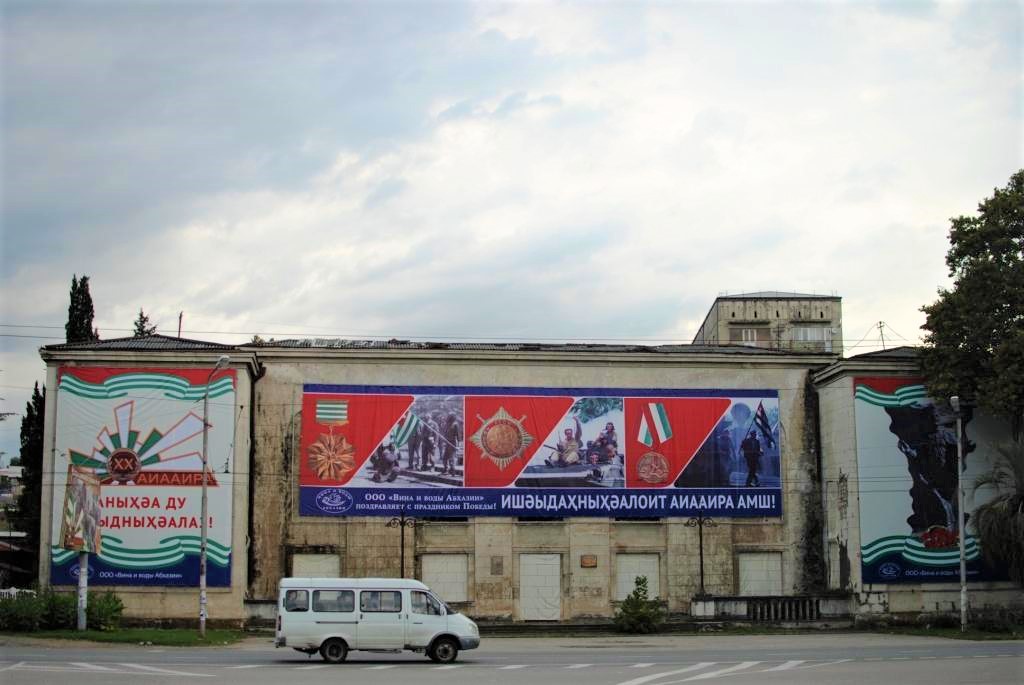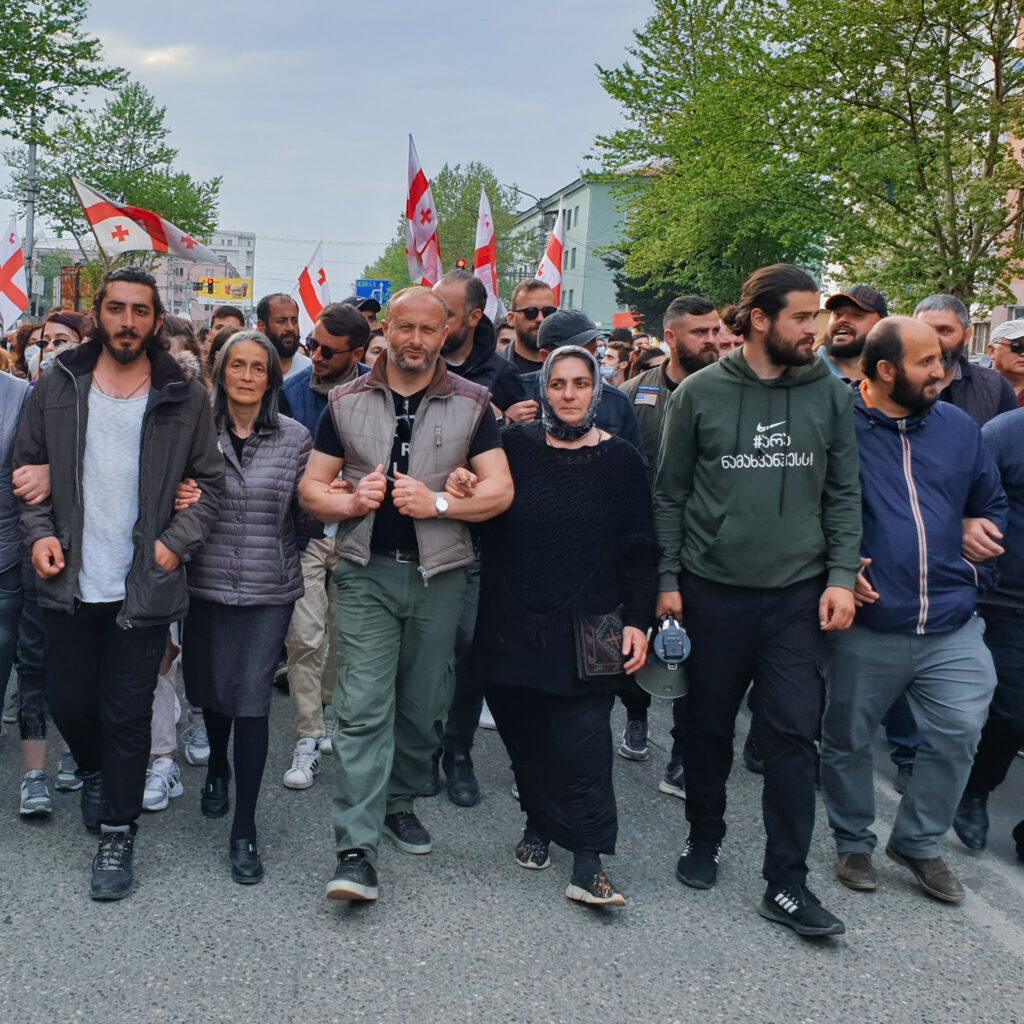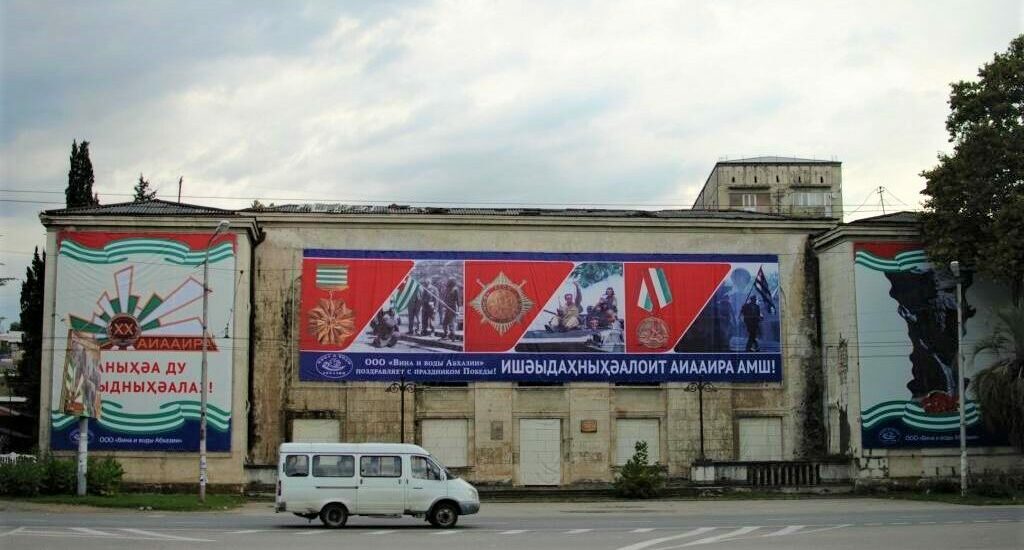
Photo: Henryk Alff

Note from editors: This text is a contribution to the Berliner Gazette’s BLACK BOX EAST text series; its German translation is available here on Berliner Gazette. You can find more texts, works, and conference information on the English-language BLACK BOX EAST website.
Infrastructures serve as basis for developmental discourses, preconfigure our ideas, and literally build futures because of their decades-long lifespans. Debates on infrastructures surely relate to materialities – rails, concrete, and wires. However, it is crucial to note that cultures, political regimes, and markets, as well as the (unequal) geographies of knowledge production matter just as prominently. Indeed, Soviet-era ideas of modernity were not all too different from their capitalist counterparts in their developmentalist ambitions and gigantic scope. They share the firm will to master and subdue space, time, and nature, in order to create Man through infrastructures – be it the Soviet worker or the capitalist consumer. Lenin’s famous dictum that “Communism is Soviet power plus the electrification of the whole country”[1] signified that after the October Revolution, infrastructure investments soared in line with the state-wide industrialization agenda.
Electricity plants, roads, and railways in the Soviet Union served industrial needs; urban transport networks connected workers’ housing estates to mines and factories. Everyday amenities, however, were often provided last, with rural areas remaining under-served in many aspects. Still, combined with mass housing construction, efforts to eliminate illiteracy, and medical care provision, major tracts of the population benefited from the Soviet-era build-up. After the collapse of the Soviet Union, severe funding cuts, mismanaged privatization, inadequate maintenance, and widespread depopulation resulted in extensive failures in transport, water, heating, electricity, or healthcare provision.
The dismantling of the Soviet Union marked the disruption of infrastructures built on the assumption of political – and thus technological – unity. Conflict-ridden peripheries, the rural and de-industrialized areas of Central Asia or the South Caucasus were particularly affected. Infrastructure declined not only because of economic downturns but also due to the out-migration of experts. Regional conflicts resulted in borders cutting through elaborate railway, pipeline, or electricity grids. Yet, perhaps most significantly, the shift from a centralized infrastructural regime to individualized, fragmented, and ailing systems affected the relation between citizens and the state. Unstable provision was coupled with steadily rising costs, a situation which in many cases was the single most important reason for the prevailing nostalgia among the population for the Soviet Union as a caretaker state.
While countries have been living off the vestiges of Soviet investment programs for three decades, new globalizing infrastructural paradigms have come into being. Particularly since the 2008 financial crisis, previously a-spatial forms of neoliberalism are being displaced by emergent regimes of infrastructure-led development, “whose ultimate objective is to produce functional transnational territories that can be ‘plugged in’ to global networks of production and trade.”[2] Yet infrastructure futures are anchored in particular pasts, and in actors’ interpretations of those pasts. We argue that in the post-Soviet context two powerful and mutually reinforcing discourses dominate the promotion and contestation of large-scale infrastructure projects: on the one hand, the decay of and nostalgia for Soviet-era modernization-through-infrastructures; on the other hand, the feeling of inferiority in relation to the West and the catch-up logic of development. In what follows, we illustrate this on the examples of contestations around urban public transport provision and around hydroelectric power plants, especially on the former peripheries of the Soviet Union.

Photo: Lela Rekhviashvili
The hardships of the 1990s were reflected in the disinvestment from publicly run transport services. Administrative responsibility was transferred from central ministries to municipalities, without any appropriate transfer of funding. No funds were available for the purchase of rolling stock or the maintenance of overhead lines. Municipalities attempted to privatize bus fleets and created legislative frameworks for route tendering during the 1990s, but the factual outcome was a replacement of the public ‘large-volume’ tram or bus lines with dominantly privately provided minibuses, locally known as marshrutkas. At the same time, industrial plants closed down and sent thousands of people into unemployment. Many were absorbed by the private marshrutka sector, with its low barriers to entry.
Apart from providing mobility options and livelihoods for millions, the marshrutka business has been inextricably intertwined with local and regional administrations, policymakers, and entrepreneurs. The borders between sector development, lobbying, and protection racket in this case have been very fluid. Coupled with mass motorization, political latency, and lack of funding, mobility sector reforms are slow, and largely limited to capital cities. Three trends are proof of the tension between Soviet-era mobility paradigms and their recent capitalist counterparts. First, state and municipal authorities have firmly internalized the belief prevalent during the Soviet period that deep-level, heavy-rail metro systems are the one and only transport mode worthy of a metropolis. The promise to provide a “real” metro in the coming decades has been used as justification for the demolition of tramway and trolleybus systems from Omsk through Ufa to Baku and Ashgabat. At the same time, relegating passengers to the underground has proved compatible with leaving the cities’ surfaces up for grabs for the automobile. Cutbacks and equating marshrutkas with the “wild 1990s” have precluded discussions on how local Soviet and post-Soviet experiences can contribute to urgently needed mobility transitions.
Second, instead of embracing the goal of universal mobility provision, public transport is still considered a welfare benefit from the Soviet era. This approach then fits well the neoliberal agenda of “targeted assistance.” The elderly and disabled are offered free rides, but public transport is treated by public authorities as if it was an option only for those who have no other choice. Consequently, it can be curtailed and neglected in scope and quality. The ever-growing group of young “urbanist” activists struggling for walkable and transport-friendly cities largely falls victim to the shiny appeal of low-floor tramways, uncritically adopting Western sustainability agendas, while vulnerable groups fall behind. This, thirdly, resonates with the hijacking of sustainability discourses by (capital) municipal authorities from Moscow to Tashkent. Their reinterpretations of green and smart urban development rhyme with dispossession and authoritarian rule, and has been termed “Hipster Stalinism.”[3]

Photo: Dato Simonia
Equally, ongoing contestations of the Georgian Namakhvani hydroelectric power plant illustrate the conflicts and contradictions involved in mobilising the socialist past, the capitalist present, and an undecided future when debating infrastructural projects. Those promoting the project – the Georgian government, Turkish and Norwegian companies, ambassadors, large media outlets, and hydropower lobbyists – demonize the protesters, accusing them of lacking social consciousness, of backwardness, and of standing in the way of the country’s energy independence. This labelling is far from new, especially in peripheral capitalist societies.[4] Namakhvani supporters refer to the widespread exploitation of hydro-resources in core, West European economies, particularly referring to Switzerland, Norway, or Austria. They argue that because Georgia lags behind developmentally, it should pursue large infrastructure projects to catch-up with core economies. Environmental and social costs can seriously be taken into consideration only afterwards. Second, they argue that Georgia and similar small peripheral countries must offer particularly beneficial conditions to foreign direct investors, in order to turn unequal contracts today into prospects of growth tomorrow.
A further complication is the selective and contradictory reference to the socialist modernity project. Hydropower supporters argue that protesters serve Russian interests and strive for Georgia’s return to the Soviet Union. Clearly, there is no Soviet Union to return to. However, the paradox lies elsewhere: the very same groups emphasize the importance of Soviet-built large hydropower stations for Georgia’s energy system, local generation capacities, and affordability. Georgia’s prime minister even foregrounded the project’s Soviet history, arguing that the best Georgian researchers had made invaluable contributions to the project in the 1980s. Hence, the state attempts to utilize nostalgia for the Soviet modernity project, and the promise of public, social goods and energy independence on the one hand, and the craving for a capitalist modernity on the other, in order to justify the compromises it makes in relation to large infrastructure projects.
In turn, those opposing the project also make claims over the socialist past. They argue that the Namakhvani project was discarded during Soviet times based on studies that flagged the high seismic risk and other environmental hazards associated with it. Further, they spell out the controversial externalities of hydropower, the role of EBRD and other development banks in greenwashing their portfolios at the expense of livelihoods and the environment, particularly in the Caucasus to the Balkans. They also foreground plans in Europe and the US to demolish dams and free up rivers. They condemn the enslaving relations with foreign investors: Georgia would relinquish access to land and water resources for free, remove tax burdens, and mitigate investors’ construction- and distribution-related risks out of the state budget. Most importantly, protesters defend the value of publicly accessed natural resources and of alternative forms of living and being, especially local agriculture-based economy and sociality. It remains to be seen how successful the protest will be, but with its insistence on democratic involvement and accountability, it has already been challenging the depoliticization of infrastructures and development in the name of lost and yet to be attained modernities.
Both with mobility systems and hydroelectric power plants, past and future are activated to defend a compromised present. To understand such conflictual narratives, we have to account for the socialist past and the loss of Soviet modernity as well as for the logic of the global capitalist order and the hierarchies it creates. Conceiving infrastructures as inherently political reveals where large-scale investments are pursued without democratic accountability, at great social and environmental costs, and sometimes even without clear economic benefits. More fundamentally, it makes it possible to question the primacy of infrastructure-led development for the region’s future.

Wladimir Sgibnev is senior researcher at the Leibniz Institute of Regional Geography (IfL), where he is coordinating the research group on Mobilities and Migration and leading the Leibniz Junior Research Group “Contentious Mobilities through a decolonial lens”. Recent research projects addressed survival strategies in peripheral mining cities, informal mobilities, and a reconceptualization of public transport as public space, as well as insights into the effects of the pandemic on public transport usage and atmospheres.

Lela Rekhviashvili is a post-doctoral researcher at Leibniz Institute for Regional Geography, Leipzig. Her research interests include the political economy of transition, informal economic practices, social movements, everyday resistance, and urban mobility. Her academic publications discuss post-soviet shared taxies in a comparative perspective with ride-sharing and informal transport, the role of everyday resistance in production of public space, and the impact of institutional change, particularly of marketization policies on informal economic practices.
[1] https://www.marxists.org/archive/lenin/works/1920/nov/21.htm
[2] Seth Schindler and J. Miguel Kanai, “Getting the territory right: infrastructure-led development and the re-emergence of spatial strategies,” Regional Studies 55, no. 1 (2021): 40.
[3] https://www.archdaily.com/577906/the-growth-of-hipster-stalinism-in-areas-of-moscow
[4] Partha Chatterjee, The Politics of the Governed: Reflections on Popular Politics in Most of the World, New York: Columbia University Press, 2004.

